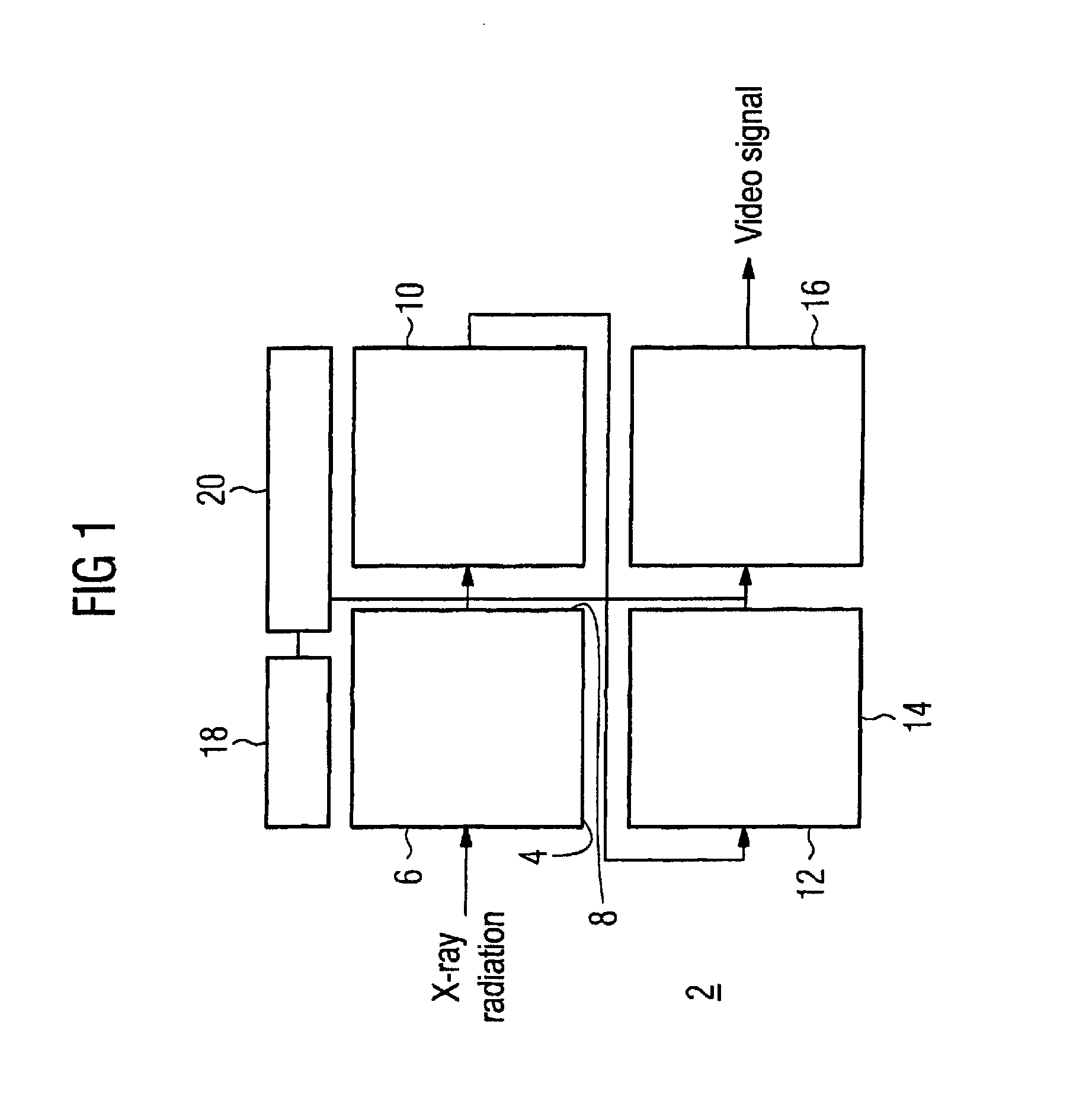Method to correct imaging errors of an x-ray image intensifier system and associated x-ray image intensifier system
an x-ray image intensifier and imaging error technology, applied in the field of associated x-ray image intensifier system, can solve the problems of not being detected in this way, specific spatial positions would be measured, dynamic variations of local magnetic field strength, etc., to achieve cost reduction, high material cost, and simple operation
- Summary
- Abstract
- Description
- Claims
- Application Information
AI Technical Summary
Benefits of technology
Problems solved by technology
Method used
Image
Examples
Embodiment Construction
[0028]The x-ray image intensifier system 2 schematically depicted in FIG. 1 is a component of a medical x-ray diagnostic system (otherwise not additionally shown here). The x-ray image intensifier system 2 comprises an image converter tube 4 (also designated more concisely as an image converter or image intensifier). The image converter tube 4 in its simplest form comprises an entrance window 6 effective as a photocathode, from which the incident x-ray radiation releases electrons upon operation. Within the evacuated image converter tube 4, the electrons released in this way are accelerated via a high voltage applied between the cathode and an associated anode, and possibly are multiplied via a microchannel plate or the like (secondary electron multiplication). The electrons accelerated in this manner finally strike a luminescent screen 8 at the output side. An electro-optical mapping of the spatial intensity distribution of the x-ray radiation striking the input window 6 to the lum...
PUM
 Login to View More
Login to View More Abstract
Description
Claims
Application Information
 Login to View More
Login to View More - R&D
- Intellectual Property
- Life Sciences
- Materials
- Tech Scout
- Unparalleled Data Quality
- Higher Quality Content
- 60% Fewer Hallucinations
Browse by: Latest US Patents, China's latest patents, Technical Efficacy Thesaurus, Application Domain, Technology Topic, Popular Technical Reports.
© 2025 PatSnap. All rights reserved.Legal|Privacy policy|Modern Slavery Act Transparency Statement|Sitemap|About US| Contact US: help@patsnap.com



